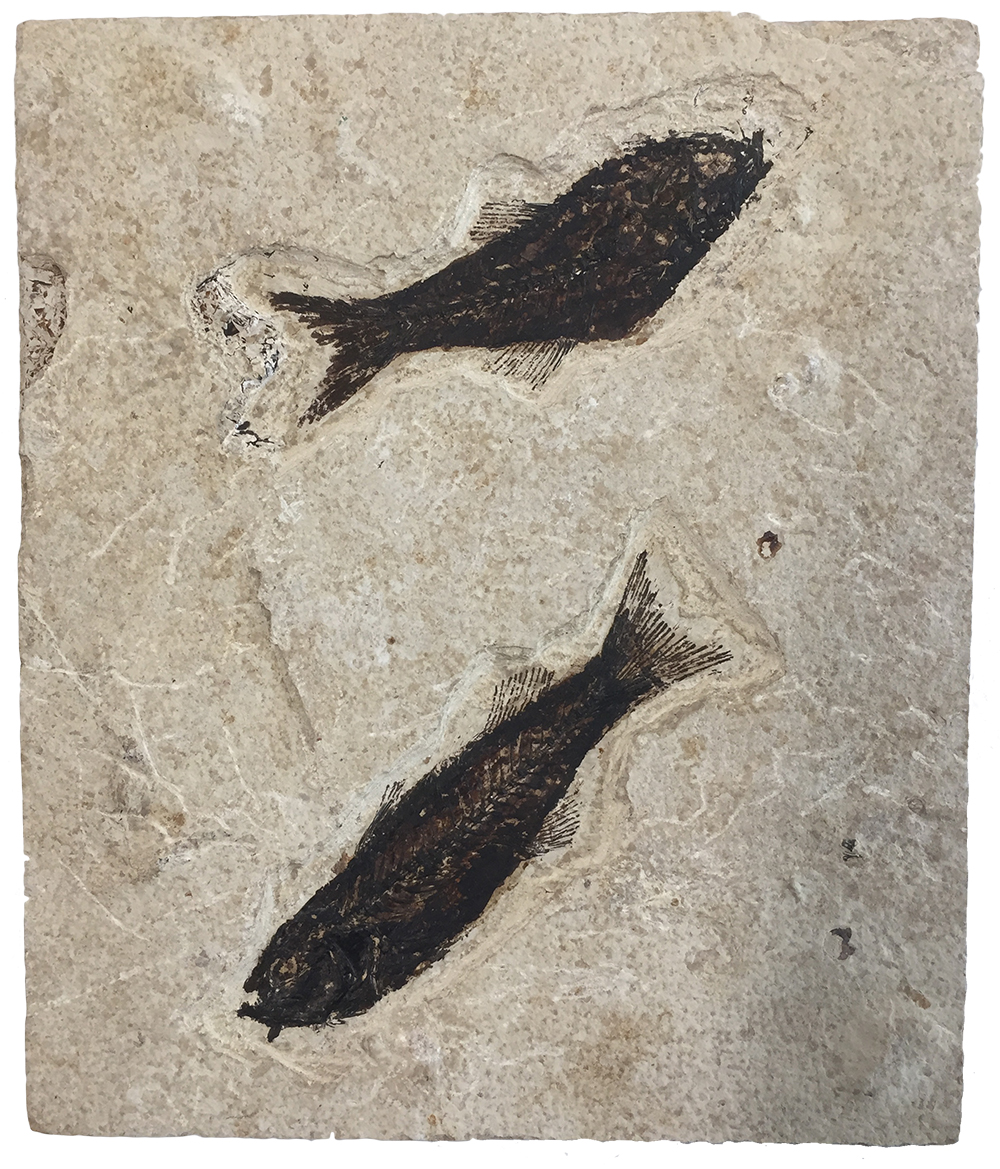
Knightia eocaena may be the most common complete vertebrate fossil in the world, simply because of its abundance in the world-famous Green River Formation. The Green River Formation largely consists of lake sediments deposited during the Eocene Epoch around 50 million years ago. These lakes formed in three intermountain basins in what is now Colorado, Wyoming, and Utah. Although the basins were at the same latitude as today, the Earth’s climate was warmer then, so they had a subtropical climate.
The lake sediments were deposited in fine varve layer pairs, a dark layer that formed during the wet season and a light-colored layer that formed during the dry season. Hence each varve pair represents a year’s deposition. In total, over six million years of deposition is captured in the basins’ lake sediments. Because it was a tectonically active area, lake sediments also include a variety of lithologies from clastic terrigenous materials to oil shales and coals, as well as lake carbonates and evaporite beds. In addition, deposition was interrupted by numerous volcanic ash layers from the Absaroka volcanic field active to the north before the Yellowstone hotspot arrived and the San Juan volcanic field to the southwest.
Within the Green River Formation are two zones of fine-grained lime mud ideally suited for detailed fossil preservation. One of these is the nearly 2-meter-thick split fish layer, so named because of the abundant fossil fish found along its easily split varve layers. It is this zone, representing some 4,000 years of deposition, that our Knightia fossil fish came from. Knightia are not the only fossils found in the Green River Formation. Its deposits hold an abundance of fish, rays, reptiles, mammals, plants, birds, crocodiles and even the oldest known bat fossil. Anoxic bottom water conditions and the limestone marl’s extremely fine-grained texture preserved even the soft parts of insects and leaves in exquisite detail.
Since dead fish usually float and are scavenged, it is unusual to find intact fish skeletons. Even within the Green River Formation, most fish fossils are scattered bones. However, some layers have exquisitely preserved intact fossil fish. This suggests lake depths must have been deep enough that bottom waters were anoxic at times, which prevented scavenging and slowed bacterial decay. It also suggest periods when the climate cooled, with temperatures low enough that fish sank rather than floated. The dense fossil concentrations of the herring-like Knightia may have formed when schools wandered into anoxic water levels and died. Because of their worldwide fame, Knightia eocaena was chosen as Wyoming’s state fossil in 1987 (although Wyoming also added Triceratops in 1994).